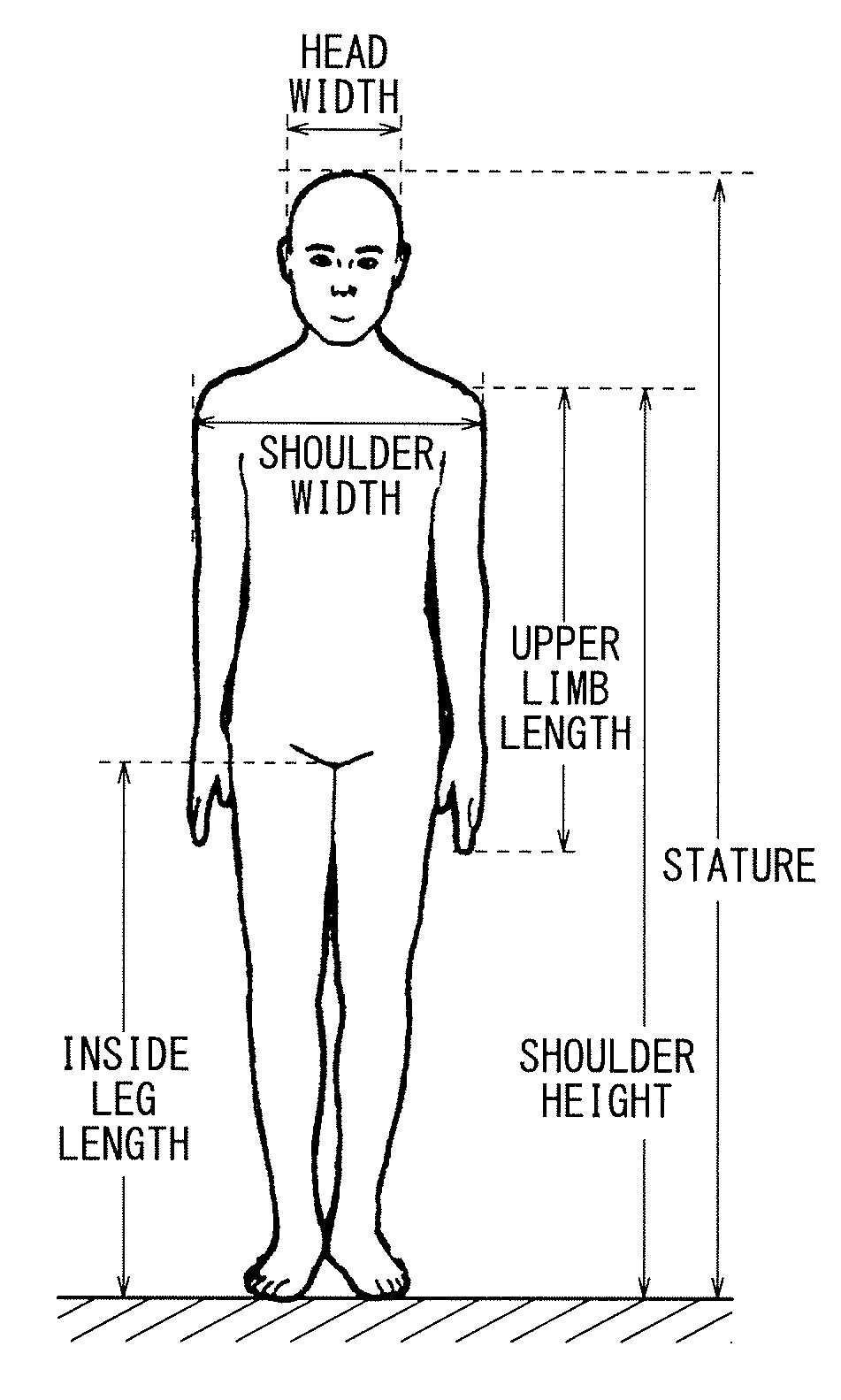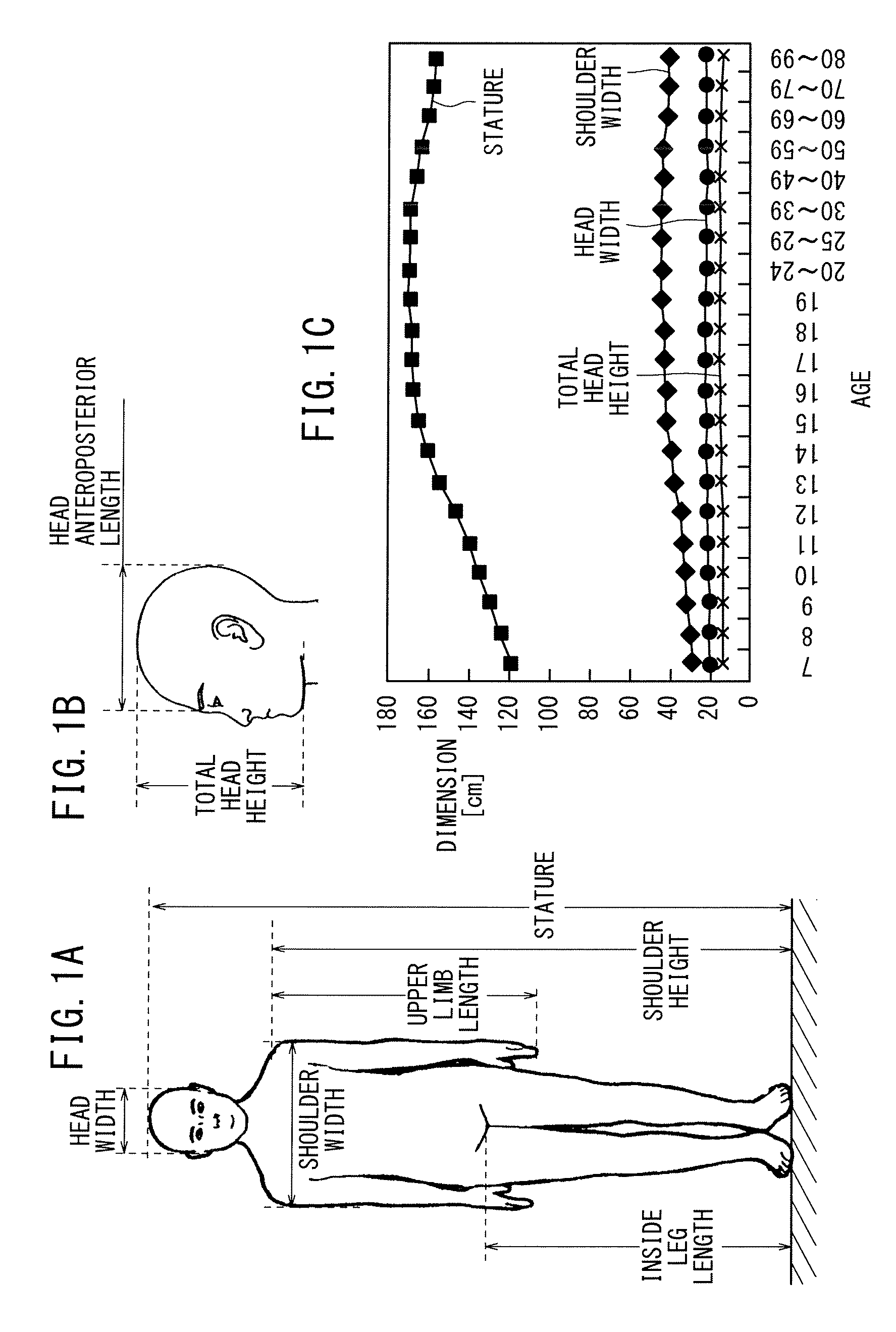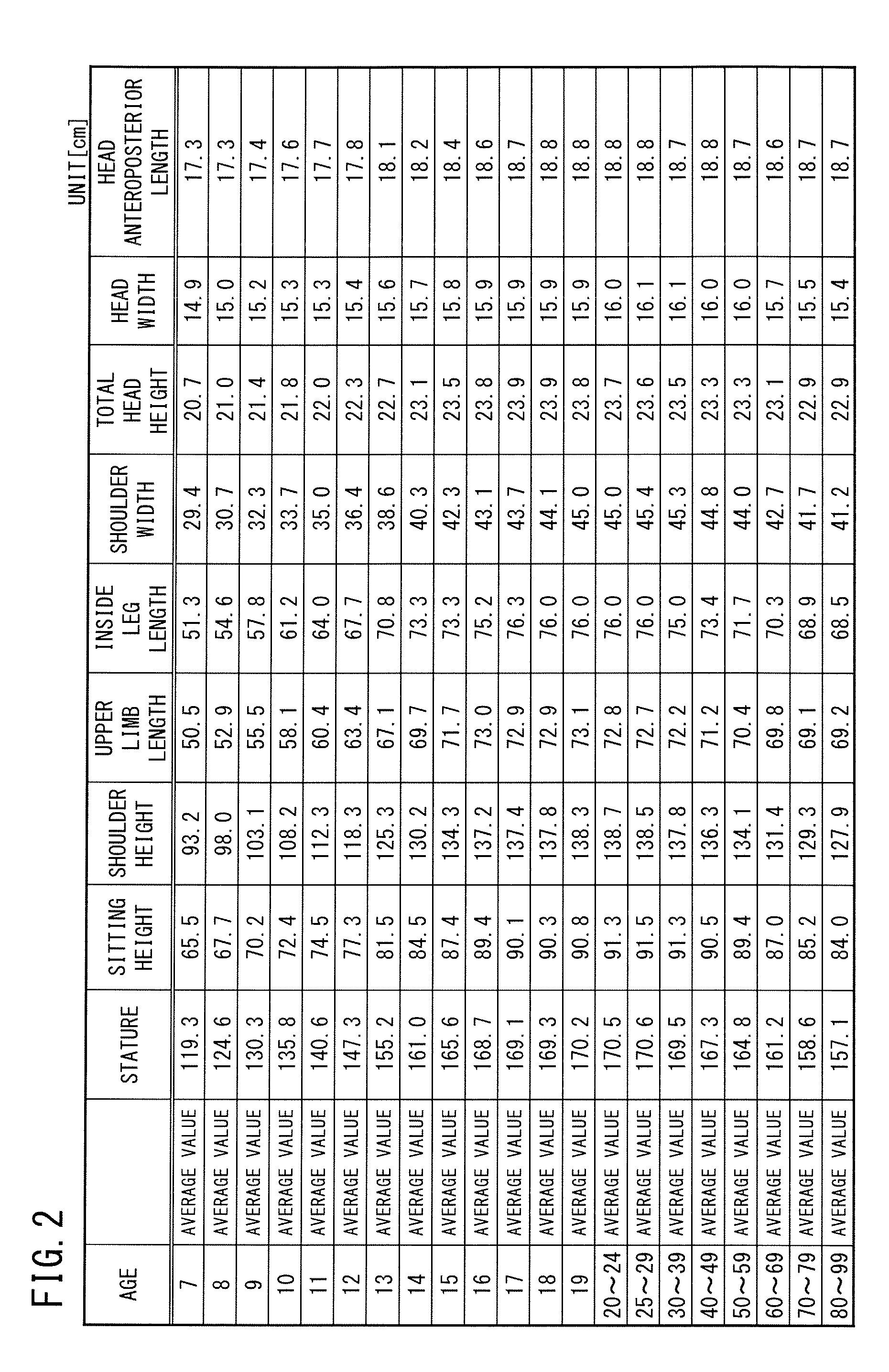Target-object distance measuring device and vehicle mounted with the device
a technology of distance measurement and target object, which is applied in the direction of instruments, image analysis, image enhancement, etc., can solve the problems of increasing the cost of the two installed cameras, requiring a complicated installation process, etc., and achieves the effects of simple arrangement, accurate calculation, and short time period
- Summary
- Abstract
- Description
- Claims
- Application Information
AI Technical Summary
Benefits of technology
Problems solved by technology
Method used
Image
Examples
##ventive example
Second Inventive Example
[0075]FIG. 12 is a table showing a map (table) 80 of calculated ratios R′ (shoulder widths / statures) according to a second inventive example, based on ages, statures (average values), and shoulder widths (average values), which are extracted from the Japanese body frame data shown in FIGS. 1A, 1B, 1C and 2, and the infant body frame data shown in FIGS. 3A, 3B, 3C and 4.
[0076]FIG. 13 is a graph showing statures, shoulder widths, and ratios R′ (shoulder width / stature) according to the second inventive example, plotted for people ranging from 4 years of age to 99 years of age. It should be noted in particular that the characteristics Cr′ of the ratio R′ (shoulder width / stature) change generally in proportion to stature for people who are 5 years of age or older.
[0077]The second inventive example operates generally in accordance with the flowchart shown in FIG. 9. The operation sequence remains the same in steps S1 through S4. In step S4, the size (represented by...
PUM
 Login to View More
Login to View More Abstract
Description
Claims
Application Information
 Login to View More
Login to View More - R&D
- Intellectual Property
- Life Sciences
- Materials
- Tech Scout
- Unparalleled Data Quality
- Higher Quality Content
- 60% Fewer Hallucinations
Browse by: Latest US Patents, China's latest patents, Technical Efficacy Thesaurus, Application Domain, Technology Topic, Popular Technical Reports.
© 2025 PatSnap. All rights reserved.Legal|Privacy policy|Modern Slavery Act Transparency Statement|Sitemap|About US| Contact US: help@patsnap.com



